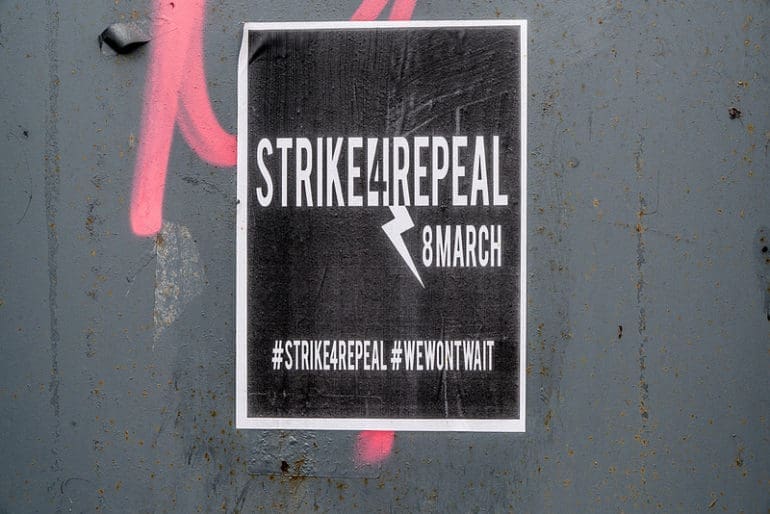Public interest in leaked and declassified intelligence reports has surged in the era of WikiLeaks and Edward Snowden. But while media outlets focus on the antics of Donald Trump, they continue to ignore hugely revealing information that could really embarrass powerful leaders, organisations, and even entire countries. And recently, as WikiLeaks continues to uncover covert US actions around the world, the CIA has actually had to release documents itself.
Below are five key revelations from a recent document dump from the CIA.
New WikiLeaks release downplayed
WikiLeaks recently published a ‘smoking gun‘; a high-level US intelligence report which proves the US sought to interfere in the 2012 French presidential elections. While the revelation headlined in European newspapers, The New York Times and others downplayed it. And The Associated Press, in its very brief coverage, dismissively (and falsely) labelled the CIA spying as “standard intelligence gathering”.
Media on our CIA scoop:
French? Front page news for top three papers
Russian? "Nuclear bomb shell"
US? "standard intelligence-gathering"— Defend Assange Campaign (@DefendAssange) February 17, 2017
But documents which the CIA itself has recently released show yet again that we shouldn’t be at all surprised by revelations of illegal schemes and covert malfeasance abroad.
CIA online document dump
On 17 January 2017, the CIA released nearly a million newly declassified files (totalling about 12 million pages) to its online CREST database (“CIA Records Search Tool”) in response to federal lawsuits. Journalists and researchers are still only starting to pour through this material (searchable here).
But below are five important finds that have received little to no media attention since the release.
These and other declassified documents help to give us a better understanding of history and how the US operates, especially in places like the Middle East.
1) A Reagan-era CIA memo considered Syrian regime change through a Muslim Brotherhood insurgency (1986)
The following is from a 24-page formerly secret report entitled Syria: Scenarios of Dramatic Political Change. Its authors? A CIA unit then known as the “Foreign Subversion and Instability Center”. The report describes scenarios which are remarkably similar to events as they unfolded at the start of the war now gripping Syria:
We believe that a renewal of communal violence between Alawis and Sunnis could inspire Sunnis in the military to turn against the regime. [p12]
Remnants of the Muslim Brotherhood–some returning from exile in Iraq–could provide a core of leadership for the movement. Although the regime has the resources to crush such a venture, we believe brutal attacks on Sunni civilians might prompt large numbers of Sunni officers and conscripts to desert or stage mutinies in support of dissidents, and Iraq might supply them with sufficient weapons to launch a civil war. [pp20-21]
In our view, US interests would be best served by a Sunni regime controlled by business-oriented moderates. Business moderates would see a strong need for Western aid and investment to build Syria’s private economy, thus opening the way for stronger ties to Western governments. [p24]
2) The CIA pondered over how to justify supporting Saddam Hussein in spite of his known use of chemical weapons (1984)
A memo sent to the CIA’s highest office (then known as “Director of Central Intelligence”) deliberated over whether the US might continue financial support for Hussein’s government even after his illegal and repeated use of chemical weapons became well-known. The CIA didn’t want plans for a Gulf-and-West-friendly oil pipeline project to be disrupted:
Moreover, recent Iraqi activities, such as use of chemical weapons and irresponsible attacks against Gulf tankers make it difficult to justify US financial help for the pipeline. But although there are obvious problems, I believe this issue should be discussed at high levels in the near future and a decision taken on whether, how, and under what circumstances the US government should support this project. [p2]
3) A secret US military programme sought to use psychics and “remote viewing” to spy on Iran (1982-1983)
A secret operation called “Grill Flame” involved a group of military-trained psychics in Maryland attempting to remotely “view” US hostages held captive in Iran during the Iran hostage crisis (1979-81). The following briefing after the event argued that psychic and ESP techniques (“Extra Sensory Perception”) were valid forms of intelligence collection:
The collection of intelligence through remote viewing has demonstrated its value. Remote viewing is a successful collection method (not an experiment)… Remote viewing should never stand alone, but should be used in conjuction with information from other intelligence sources. [p15]
4) A CIA memo outlined a plan to use US allies to stage border incidents with Syria in order to allow access to an oil pipeline (1983)
The plan laid out in a CIA document called Bringing Real Muscle to Bear Against Syria doesn’t appear to have ever been carried out. But it envisioned using then US ally Saddam Hussein, along with Israel and Turkey, to secure US oil interests via covertly staged border attacks:
The US should consider sharply escalating the pressures against [Hafez] Assad through covertly orchestrating simultaneous military threats against Syria from three border states hostile to Syria: Iraq, Israel, and Turkey. Iraq… would undertake limited military (air) operations against Syria with the sole goal of opening the pipeline. [p1]
Faced with three belligerent fronts, Assad would probably be forced to abandon his policy of closure of the pipeline. [p1]
The US should consider urging Iraq to take the war to the other key source of its predicament: Syria. [p2]
5) A secret CIA study concluded that any future revolution in Syria would likely result in “long term” sectarian-based terrorism inside the country (1985)
A lengthy CIA study explored scenarios of sectarian war inside Syria. It predicted that government destabilisation would ignite a sect-based war between Sunnis and the Alawites that dominate the higher levels of government:
We believe a Sunni challenge to Assad’s successors in the long term probably would take the form of terrorism or insurrection in provincial urban centers. [p12]
To succeed, mass opposition pitting Sunnis against the new regime would require breaking the coalition of Alawites and rural Sunnis, destroying military discipline and Ba’ath Party identification, and detaching peasants, workers, and the salaried middle class from their dependence on state and party institutions. [pp12-13]
So there we go. Talk of destabilising other countries. An apparent lack of concern for human rights. And even some extrasensory perception for good measure. All in a day’s work at the CIA.
Get Involved!
– Learn about and support MuckRock.com’s public records accountability initiatives.
– Visit the WikiLeaks store to support the organisation’s mission.
– Search the CIA’s CREST archive here.
– Support The Canary so we can keep holding the powerful to account.
Featured image via Central Intelligence Agency/Flickr


















